
| Rus | Eng |
XXII INTERNATIONAL MATERIALS RESEARCH CONGRESS 2013
11 – 15 August, Cancún, Mexico
These annual international meetings provide an interactive forum to discuss the advances in synthesis, characterization, properties, processing, applications, basic research trends, corrosion prevention, and more, all related to the area of materials science and engineering.
The efforts of several societies, colleagues, sponsors and exhibitors offer an exciting multidisciplinary stage to learn first-hand about new directions in materials research and technology, as well as a valuable opportunity to share and exchange ideas with some of the foremost experts in the field.
 SYMPOSIA
SYMPOSIA
1. Nanoscience and Nanotechnology
1A. Theoretical Aspects of Metal Clusters and Nanoalloys
1B. Nanostructured Carbon Materials-Fundamentals to Applications
1C. Emergent Properties of Polar Interfaces and Nanostructures
1D. Nanotechnology Enhanced Coatings
1E. Nanostructured Materials and Nanotechnology
2. Biomaterials
2A. Biomaterials for medical applications
2B. Bioinspired Hybrid Materials Synthesis
2C. Biominerals: From Biological Mechanism to Applications
3. Materials for Energy
3A. Photovoltaics, Solar Energy Materials and Technologies
3B. Renewable Energy and Sustainable Development
3C. Advanced Materials and Technologies for Energy Storage Devices
4. Fundamental Materials Science
4A. Advanced Structural Materials
4B. Concrete and Durability of Concrete Structures
4C. Functional Solid State Materials: Synthesis, Characterization, Theory, and Structure-Property Relationships
4D. New Trends in polymer chemistry and characterization
4E. Advances in Computational Materials Science
4F. Advances in Thin Film Processing
5. Materials Characterization
5A. Electron Microscopy of Materials
5B. Advancing Materials Characterization with Neutrons
5C. Structural and Chemical Characterization of Metals Alloys and Compounds
6. Materials for Environmental Applications
6A. Catalysis - Solids, Molecules, Nanoparticles and Interfaces
6B. NACE: Corrosion and Metallurgy
6C. Materials for Environmental Remediation and Sensing
7. Magnetic and Electronic Materials
7A. Magnetic shape memory alloys: from fundamentals to applications
7B. Current Trends in Magnetic Refrigeration
7C. Magneto-Optical Materials for nonreciprocal photonics, Imaging and Spatial Light Modulators
7D. Advances In Functional Semiconducting Materials
7E. Low-Dimensional Semiconductor Structures
8. General
8A. Cultural Heritage and Archaeological Issues in Materials Science (CHARIMSc)
8B. Strategies for Academy-Industry Relationship
TUTORIALS
1. Polarity compensation mechanisms in oxide surfaces, interfaces thin films and nano-objects
2. Electron Microscopy for Materials: from the Basics to Atomic Resolution
3. Catalytic Properties using First Principles Methods
4. I+D Privado - Pública ¿colaboración imposible o colaboración imprescindible?
5. Lecture Course Of Growth, Technology And Physics Of Semiconductor Nanowires
6. Technological Innovation & Entrepreneurship
7. Ninguno
SYMPOSIA 1. Nanoscience and Nanotechnology
1B. Nanostructured Carbon Materials-Fundamentals to Applications
The expression "carbon age" has been coined to express the rapid development of new carbon nanomaterials whose unique electronic, optical, mechanical and thermal properties derive from carbon’s different allotropes: diamond, fullerenes, nanotubes, graphene and graphene oxides. This symposium will review recent progress in carbon-based material growth mechanisms, functionalization, and structural control of various nanostructures enroute to 3D architectures and their applications.
The significance of these nanocarbon bulk materials comes from their hierarchical 3D architectures and high-mass specific-surface area. The challenge and opportunity is to design nanostructured bulk materials with controlled architectures at the atomic and nanometer scales and surface functionalization that span multiple length scales to the macro size. Future progress will thus depend on improvements in growth techniques, structural control, surface functionalization, and large-scale synthesis and characterization, as well as advancing in the theoretical understanding and control of interfacial phenomena. Special focus will be given to structure vs property correlations, interfacial phenomena and novel applications. The symposium will bring together scientists from often-separated fields, therefore providing a platform to identify new opportunities in science and applications.
Symposium topics to be addressed include:
- Novel growth techniques of CNTs, graphene, nanocrystalline diamond, graphene oxides, buckyballs and other carbon-related nanostructures
- Atomic-scale nucleation and graphitization in metal and nonmetal catalytic growth processes
- Synthesis and characterization of graphitic nanocarbon bulk materials with 3D architectures
- Doping, surface chemistry and functionalization of graphitic carbon nanomaterials
- Interfacial properties–from fundamentals to applications
- Thermal and mechanical properties of carbon nanostructures
- Catalytic properties of graphene oxides, graphene edges and nanodiamond structures
- Novel phenomena of layer-, edge- and size-controlled graphene and atomic-structure-controlled CNTs
- In-situ monitoring of growth processes and ex-situ characterization of atomic structures
- Applications in energy conversion and storage, electronics, optics, optoelectronics, photonics, catalysis, purification, sensorics and actuation, as well as bioinspired applications
- Modeling and theoretical predictions for novel properties
 Dr.Yury Gogotsi "MXenes: TWO-DIMENSIONAL EARLY TRANSITION METAL CARBIDES AND CARBONITRIDES"
Dr.Yury Gogotsi "MXenes: TWO-DIMENSIONAL EARLY TRANSITION METAL CARBIDES AND CARBONITRIDES"
Abstract
Two-dimensional (2D) materials are attracting much attention due to their unique properties. The most famous example is graphene, which is an atomically thin layer of carbon atoms bonded together in-plane with sp2 bonds. Recently, we discovered an entirely new family of 2D materials - early transition metal carbides and carbonitrides [1,2].
Selective etching of the A-group element from a MAX phase results in formation of 2D Mn+1Xn layers, labeled “MXene”. Eight different carbides and carbonitrides have been produced to date [2]; the properties of a larger number of 2D compounds have been predicted by DFT. Not only are individual layers formed after exfoliation, but also multi-layer particles and conical scrolls with radii < 20 nm. DFT simulations showed that the band gap of MXenes can be tuned from metallic to semiconductor by changing their surface termination, and their elastic constants along the basal plane are higher than that of the binary carbides. Recently, we reported on the intercalation of Ti3C2, Ti3CN and TiNbC [3].
Intercalation of hydrazine, and its co-intercalation with DMF, resulted in an increase of the c lattice parameter of MXenes. Urea also intercalated Ti3C2. Molecular dynamics simulations suggest that a hydrazine monolayer intercalates between the Ti3C2 layers. Hydrazine also intercalated Ti3CN and TiNbC. When dimethyl sulfoxide was intercalated into Ti3C2, followed by sonication in water, it delaminated forming a stable colloidal solution that was in turn filtered to produce MXene “paper”. One of the many potential applications for 2-D Ti3C2 is in electrical energy storage systems, such as lithium ion batteries and electrochemical capacitors. Additive-free Ti3C2 anodes, produced by filtering an aqueous dispersion of delaminated Ti3C2, showed a higher capacity than graphite anodes and also could be charged/discharged at significantly higher rates.
Source: www.mrs-mexico.org.mx




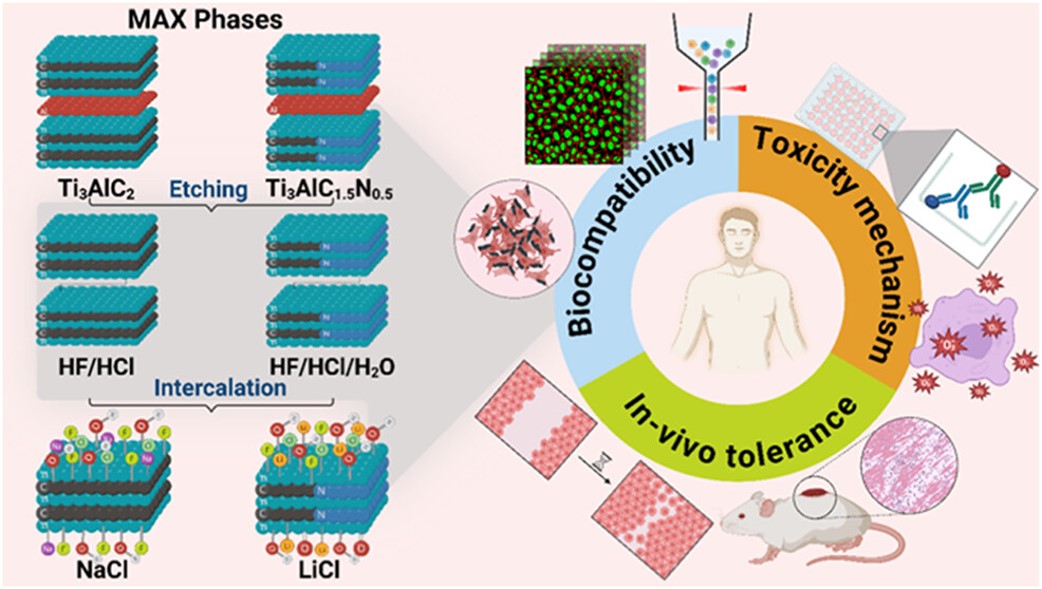 MXenes potential applications include sensors, wound healing materials, and drug delivery systems. A recent study explored how different synthesis methods affect the safety and performance of MXenes. By comparing etching conditions and intercalation strategies, researchers discovered that fine-tuning the surface chemistry of MXenes plays a crucial role in improving biocompatibility. These results provide practical guidelines for developing safer MXenes and bring the field one step closer to real biomedical applications.
MXenes potential applications include sensors, wound healing materials, and drug delivery systems. A recent study explored how different synthesis methods affect the safety and performance of MXenes. By comparing etching conditions and intercalation strategies, researchers discovered that fine-tuning the surface chemistry of MXenes plays a crucial role in improving biocompatibility. These results provide practical guidelines for developing safer MXenes and bring the field one step closer to real biomedical applications.
 Exellent news, our joint patent application with Drexel University on highly porous MAX phase precursor for MXene synthesis published. Congratulations and thanks to all team involved!
Exellent news, our joint patent application with Drexel University on highly porous MAX phase precursor for MXene synthesis published. Congratulations and thanks to all team involved! Our team was very delighted to take part in International Symposium "The MXene Frontier: Transformative Nanomaterials Shaping the Future" – the largest MXene event in Europe this year!
Our team was very delighted to take part in International Symposium "The MXene Frontier: Transformative Nanomaterials Shaping the Future" – the largest MXene event in Europe this year!  Last Call! Have you submitted your abstract for IEEE NAP-2025 yet? Join us at the International Symposium on "The MXene Frontier: Transformative Nanomaterials Shaping the Future" – the largest MXene-focused conference in Europe this year! Final Submission Deadline: May 15, 2025. Don’t miss this exclusive opportunity to showcase your research and engage with world leaders in the MXene field!
Last Call! Have you submitted your abstract for IEEE NAP-2025 yet? Join us at the International Symposium on "The MXene Frontier: Transformative Nanomaterials Shaping the Future" – the largest MXene-focused conference in Europe this year! Final Submission Deadline: May 15, 2025. Don’t miss this exclusive opportunity to showcase your research and engage with world leaders in the MXene field! We are excited to announce the publication of latest review article on MXenes in Healthcare. This comprehensive review explores the groundbreaking role of MXenes—an emerging class of 2D materials—in revolutionizing the fields of medical diagnostics and therapeutics. Read the full article here: https://doi.org/10.1039/D4NR04853A.
We are excited to announce the publication of latest review article on MXenes in Healthcare. This comprehensive review explores the groundbreaking role of MXenes—an emerging class of 2D materials—in revolutionizing the fields of medical diagnostics and therapeutics. Read the full article here: https://doi.org/10.1039/D4NR04853A. Congratulations and thank you to our collaborators from TU Wien and CEST for very interesting work and making it published! In this work, an upscalable electrochemical MXene synthesis is presented. Yields of up to 60% electrochemical MXene (EC-MXene) with no byproducts from a single exfoliation cycle are achieved.
Congratulations and thank you to our collaborators from TU Wien and CEST for very interesting work and making it published! In this work, an upscalable electrochemical MXene synthesis is presented. Yields of up to 60% electrochemical MXene (EC-MXene) with no byproducts from a single exfoliation cycle are achieved. Congratulations to all collaborators with this interesting joint work!
Congratulations to all collaborators with this interesting joint work!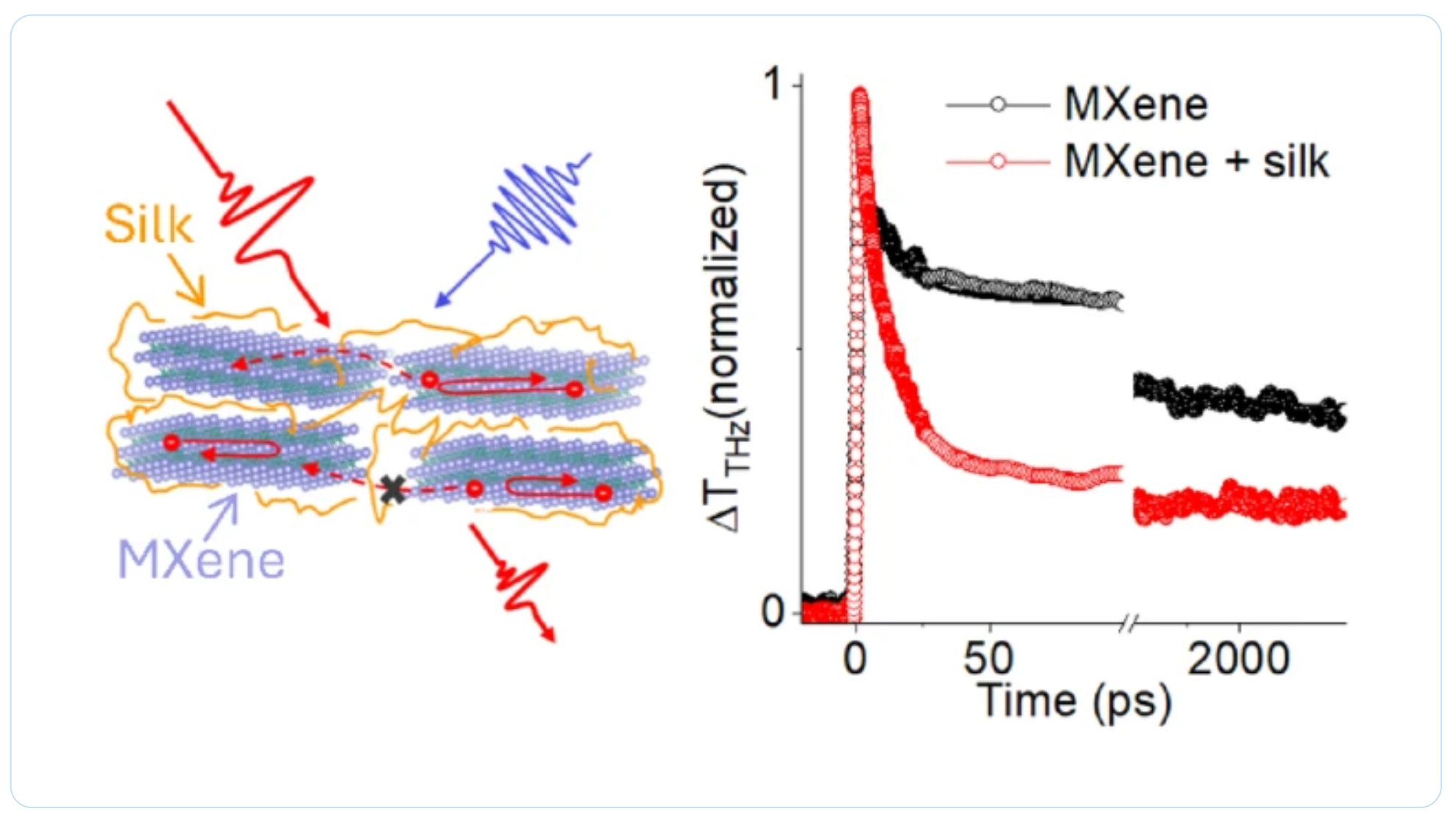 Thank you to our collaborators for the amazing joint work recently published in Graphene and 2D Nanomaterials about MXene–silk fibroin composite films aiming to develop materials with tunable electronic and thermal properties
Thank you to our collaborators for the amazing joint work recently published in Graphene and 2D Nanomaterials about MXene–silk fibroin composite films aiming to develop materials with tunable electronic and thermal properties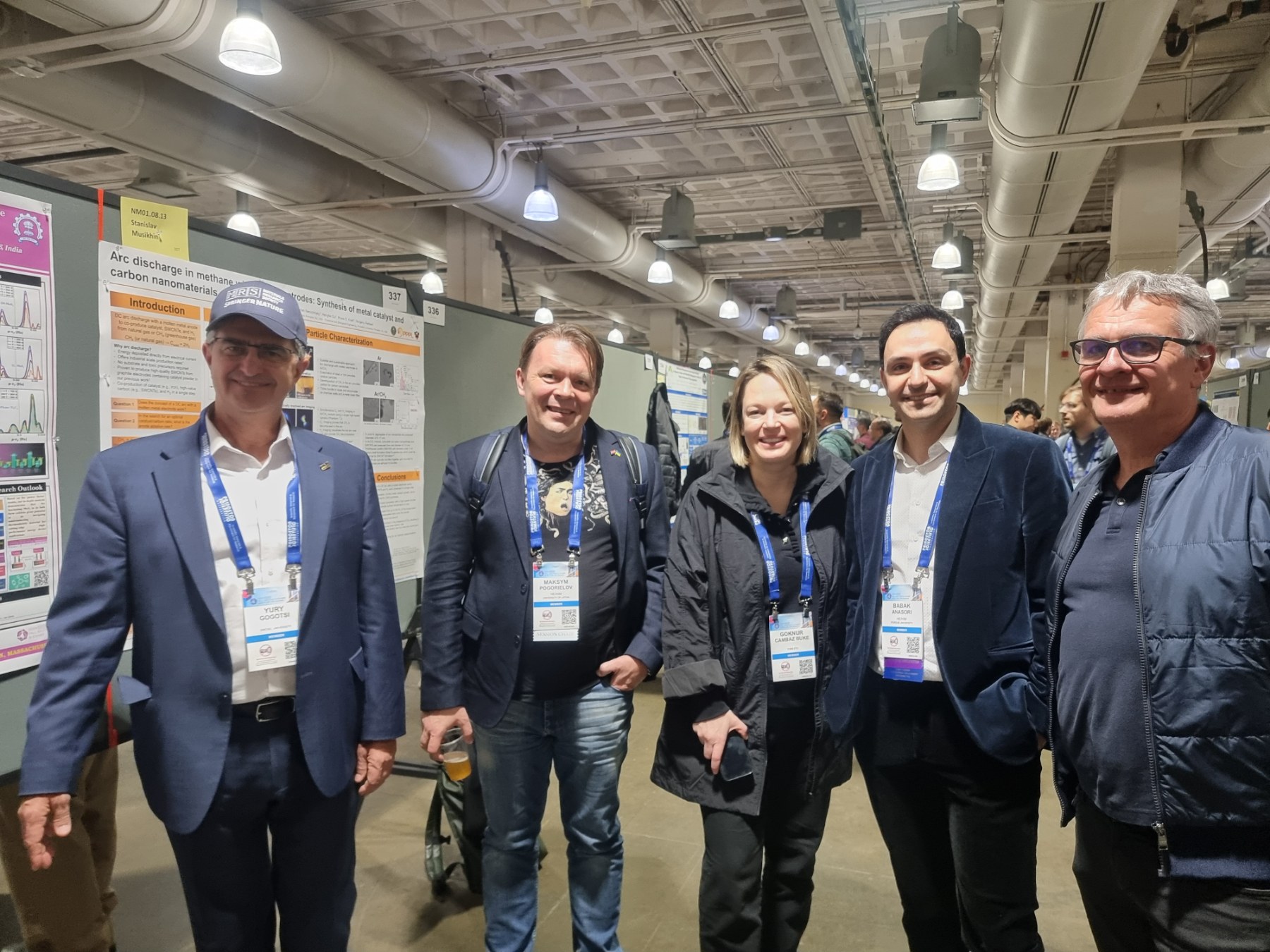 Dr. Oleksiy Gogotsi, director of MRC and Carbon-Ukraine, innovative companies that are among the leaders on the world MXene market, visited 2024 MRS Fall Meeting & Exhibit. together with Dr. Maksym Pogorielov, Head of Advanced Biomaterials and Biophysics Laboratory, University of Latvia.
Dr. Oleksiy Gogotsi, director of MRC and Carbon-Ukraine, innovative companies that are among the leaders on the world MXene market, visited 2024 MRS Fall Meeting & Exhibit. together with Dr. Maksym Pogorielov, Head of Advanced Biomaterials and Biophysics Laboratory, University of Latvia.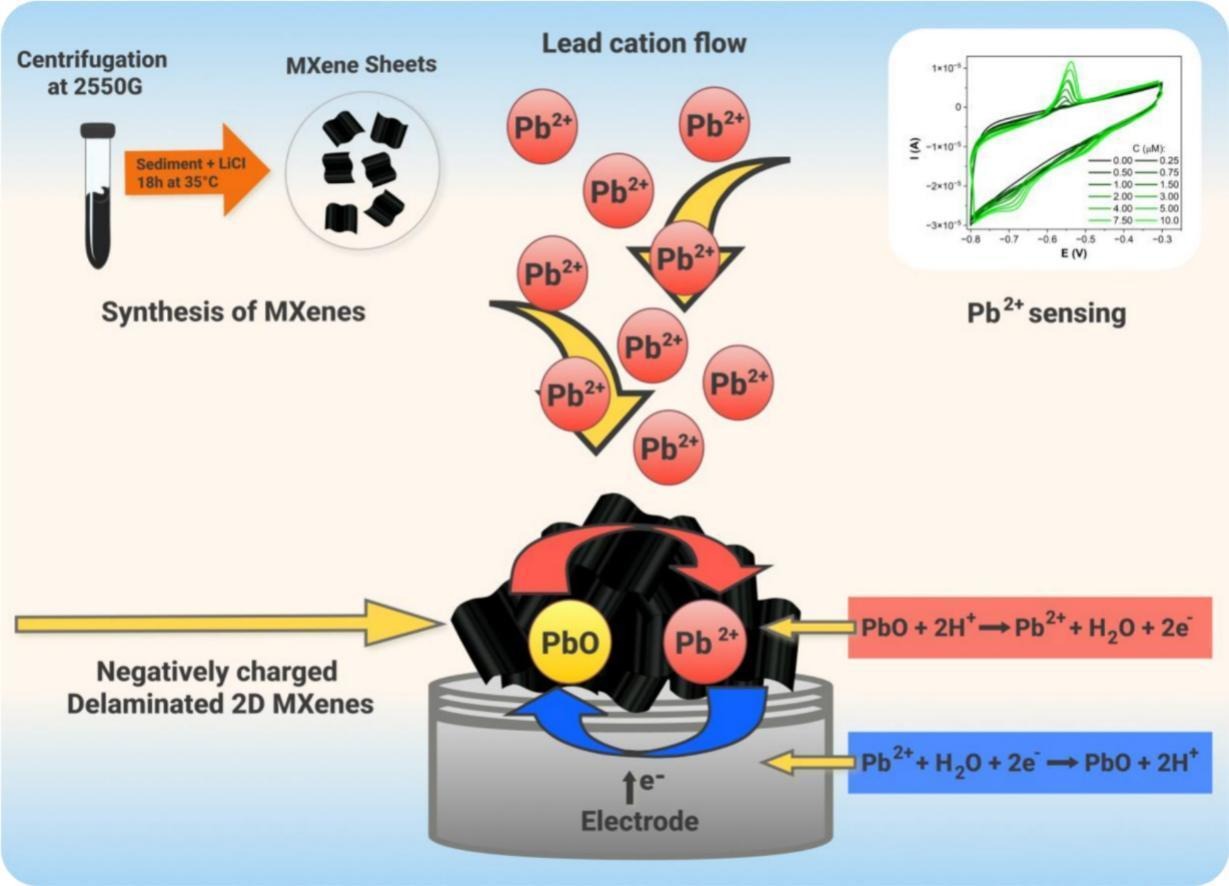
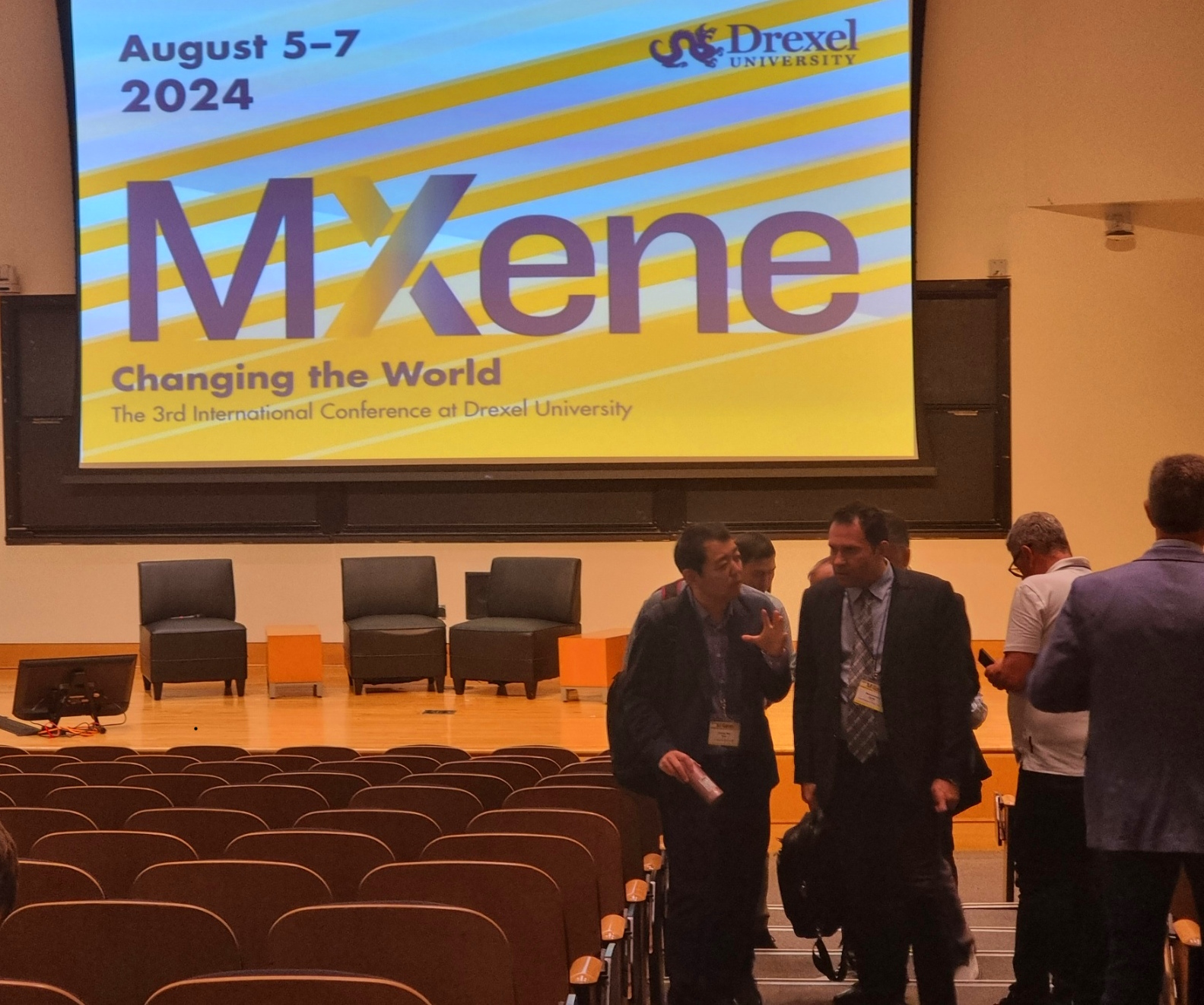 MRC and Carbon-Ukraine team visited the 3rd International MXene conference held at Drexel University on August 5-8, 2024. Conference brought together the best reserchers and leading experts on MXene field.
MRC and Carbon-Ukraine team visited the 3rd International MXene conference held at Drexel University on August 5-8, 2024. Conference brought together the best reserchers and leading experts on MXene field. 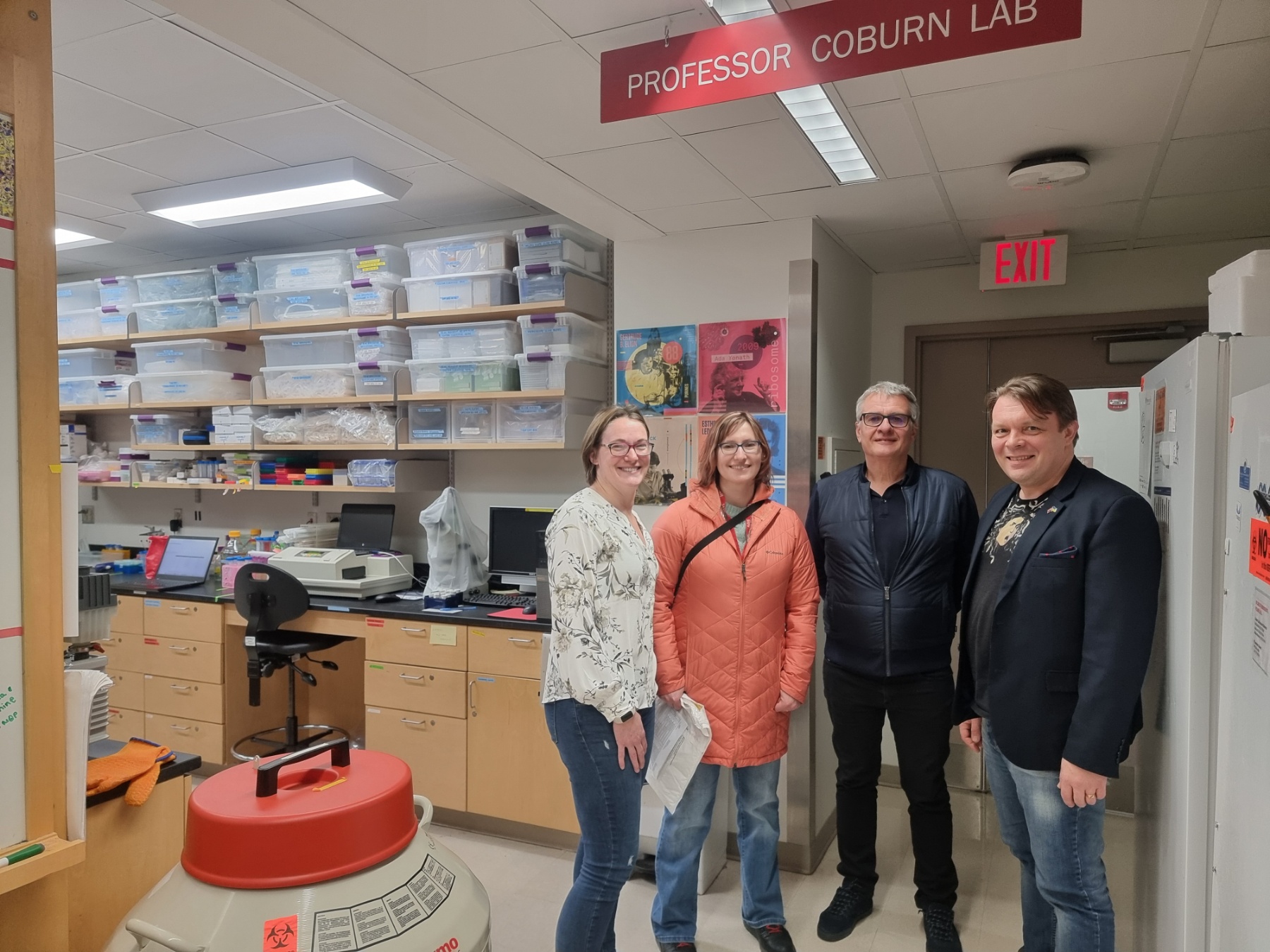
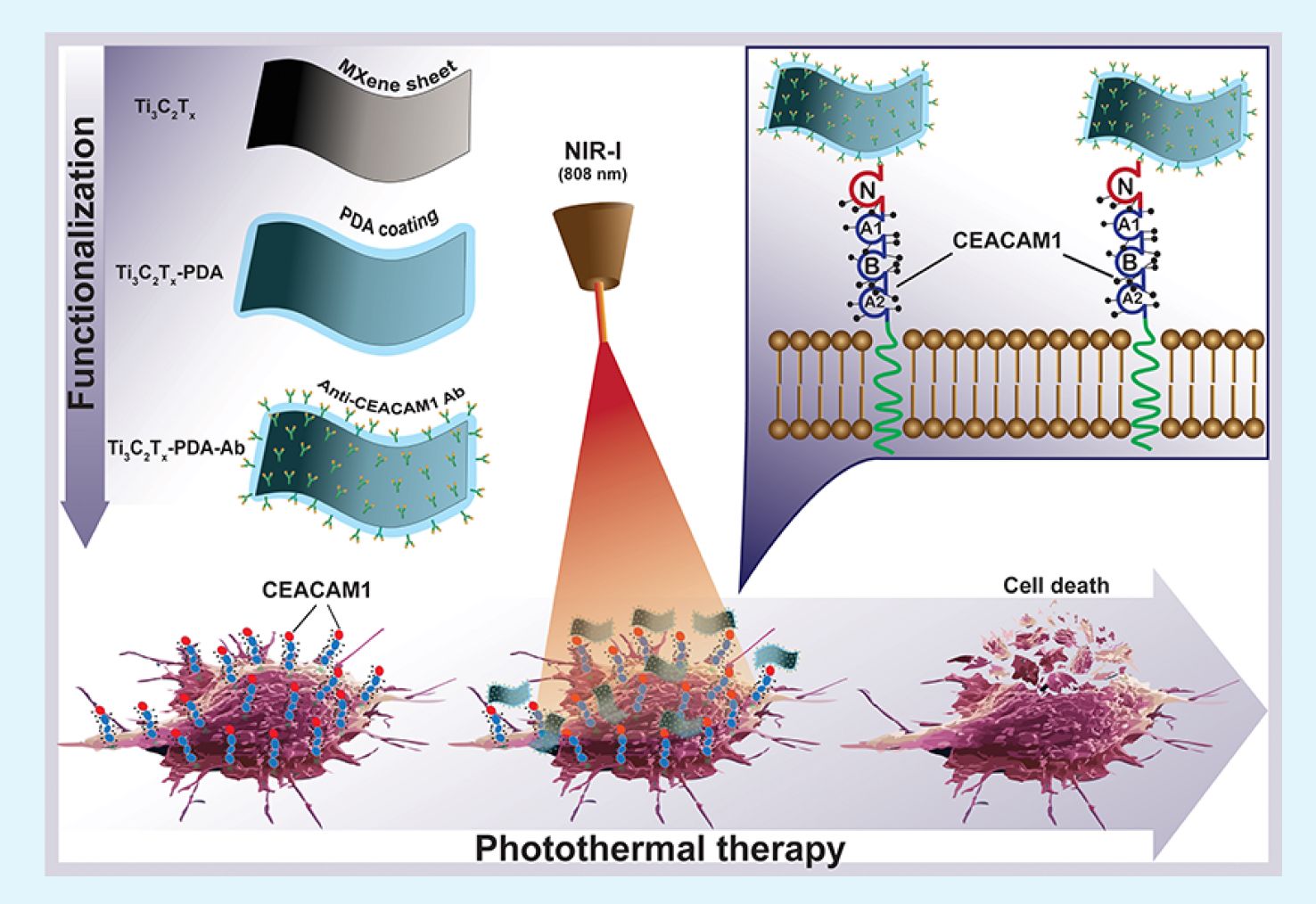 Together with colleagues from the University of Latvia, MRC/Carbone Ukraine, Adam Mickiewicz University, University Clinic Essen, and others, we have developed a novel concept involving the binding of antibodies to MXenes. In our research, we utilized anti-CEACAM1 antibodies to develop targeted photo-thermal therapy for melanoma (in vitro), paving the way for future in vivo studies and clinical trials. For the first time, we demonstrate the feasibility of delivering MXenes specifically targeted to melanoma cells, enabling the effective ablation of cancer cells under near-infrared (NIR) light. This new technique opens up vast potential for the application of MXenes in cancer treatment, diagnostics, drug delivery, and many other medical purposes.
Together with colleagues from the University of Latvia, MRC/Carbone Ukraine, Adam Mickiewicz University, University Clinic Essen, and others, we have developed a novel concept involving the binding of antibodies to MXenes. In our research, we utilized anti-CEACAM1 antibodies to develop targeted photo-thermal therapy for melanoma (in vitro), paving the way for future in vivo studies and clinical trials. For the first time, we demonstrate the feasibility of delivering MXenes specifically targeted to melanoma cells, enabling the effective ablation of cancer cells under near-infrared (NIR) light. This new technique opens up vast potential for the application of MXenes in cancer treatment, diagnostics, drug delivery, and many other medical purposes.